"In so many ways, 2016 is all about being in the right place at the right time for Barolo... The result is a vintage full of truly spectacular, breathtaking wines that captures all the pedigree that Nebbiolo and Barolo are capable of."
- Antonio Galloni (February 2020)
Last week, Mark Ross and I popped over to Piedmont for a quick visit to some producers whose wines we already know (Cavallotto, Rocche Costamagna and Voerzio-Martini) and to make some new discoveries for ourselves. After an early morning flight, followed by a two hour drive from Milan Malpensa, we eventually arrived in the glorious hills of the Langhe, just in time to sample one of Piedmont’s finest attractions – lunch!
Our first visit was to our old friends at Rocche Costamagna, right in the middle of one of the most beautiful places in the region – the hilltop village of La Morra. The commune is home to some prestigious ‘grand cru’ vineyards such as Brunate, Cerequio and Rocche dell’Annunziata and the wines of La Morra can be the softest and most elegant of the region. That said, La Morra is analogous to Saint Emilion in that it is home to a large number of growers who produce a wide range of styles right across the spectrum.
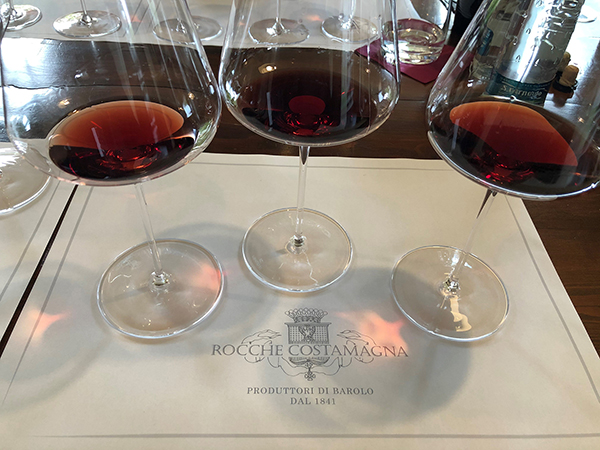
Thankfully for us, Rocche Costamagna’s wines are traditionally made and, whilst ripe and sumptuous, they are the very essence of elegance and purity. Alessandro Locatelli guided us through a side-by-side tasting of his Barolo and Barolo Rocche dell’Annunziata from the 2016 and 2015 vintages before being treated to their Barolo Riserva Rocche dell’Annunziata from the 2015 and 2013 vintages. Alessandro’s 2016 Barolo ‘normale’ was an extremely serious wine and, I think it’s fair to say, it took us both by surprise. His Rocche dell’Annunziata was a step up and has to be one of the best value ‘cru’ wines available. We both left feeling very excited about our first taste of the eagerly anticipated 2016 vintage.
Our next stop was another Farr Vintners’ favourite, Voerzio-Martini, just down the road. This exciting ‘new’ estate came into being when Piero Martini (of vermouth family fame) bought Gianni Voerzio’s estate (Gianni is Roberto Voerzio’s brother) for his twins Mirko and Federica. Although Gianni stayed on-board for three years to oversee the transition, Mirko and Federica have dialled back Gianni’s style in favour of less oak, larger barrels and a focus on vineyard over winery. The wines here are more ‘modern’ than those of, say, Rocche Costamagna, but are in no way over-extracted or too oaky. They seem to coax almost new world levels of ripeness out of their grapes which would be perfect for anyone who feels that the wines of Piedmont don’t have enough fruit or believe that these must be cellared for decades. Their Barolo ‘normale’ is a great introduction to the house style but their Barolo La Serra is the jewel in the crown.
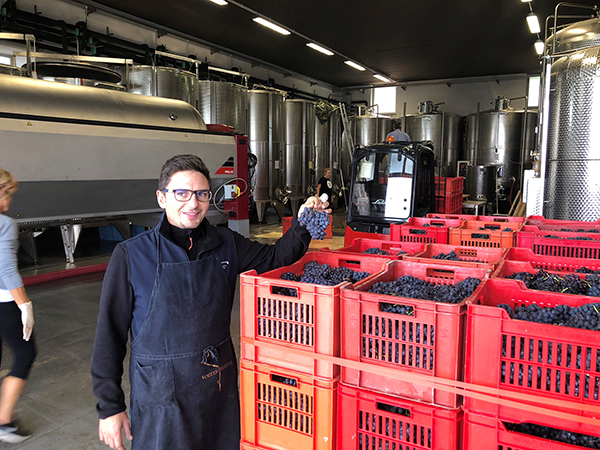
We then hopped in the car to Dogliani, in the very south of the region, where the Dolcetto grape is king. It is here that the historic estate of Poderi Luigi Einaudi is located. Initially, Einaudi focussed only on producing Dolcetto but, over the years, they have gradually acquired some enviable vineyards in the Barolo appellation. Under fourth generation Matteo Sardagna Einaudi, they have embraced the very best of modern technology including a state-of-the-art underground winery complete with roto-fermenters, concrete tulip tanks (made by Nico Velo who made the ones at Cheval Blanc) and temperature-controlled fermentation. The result is wines that are perhaps the most ethereal and elegant – dare we say Burgundian – of all of the wines we tasted. Everything in the winemaking is about gentleness and that shows in the wines. They are far from being weedy, but they have a purity and elegance that is quite beguiling. His 2016 Terlo Costa Grimaldi is the most savoury of his crus. It is super-complex and will age magnificently. Their 2016 Cannubi is more about pure fruit than savoury elements and has a core of power and concentration that is the hallmark of this great vintage. The 2016 Bussia is a return to a more classic, powerful embodiment of Barolo – super complex and very, very long.
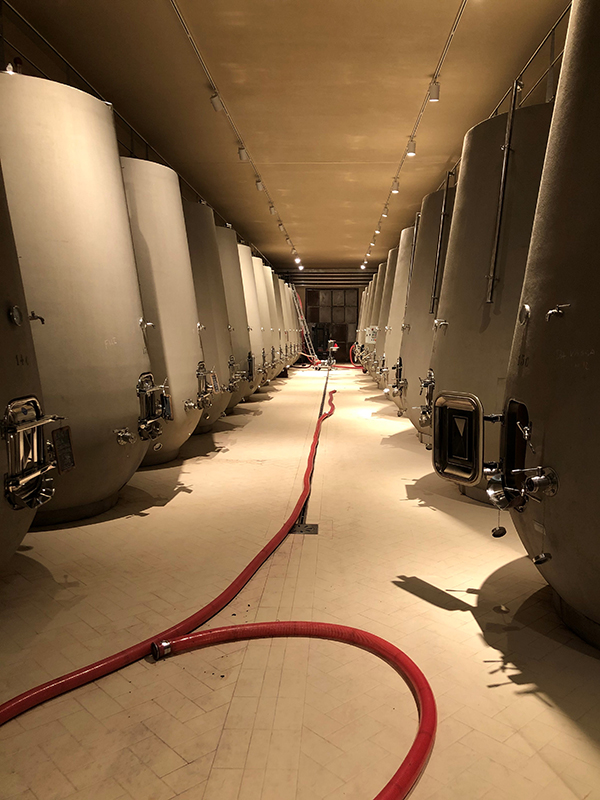
The next morning we headed back into Barolo ‘proper’ and over to the famed Ginestra locality of the Monforte d’Alba commune to visit Paolo Conterno. Monforte is home to some famous but unusually large vineyards (just 11 big ones here compared to 39 smaller ones in La Morra). As a result, the commune is somewhat simpler to understand but slightly more generic in quality/style. However, a bit like Burgundy’s Clos de Vougeot, if your vines are in the right part of the vineyard then you’re in for a treat. Ginestra is arguably the finest of all Monforte’s vineyards and Paolo’s vines produces one of the cru’s freshest more aromatic wines. His 2016 Ginestra was the embodiment of freshness, power and complexity. Tropical fruit, cassis – so much to like. It was hard to top that but his 2011 Ginestra Riserva did exactly that – it was seriously impressive and a real thing of beauty.
Our next stop was just outside of the village of Barolo, the commune that gives its name to this great region. Although its vineyards (with the exception of Cannubi) may be less exalted than those of La Morra or Serralunga d’Alba, Barolo is home to some legendary ‘first growth’ producers like Bartolo Mascarello and Giuseppe Rinaldi. But we all know already how good those producers are and this visit was more about the lesser known, hidden gems and boy did we unearth one of those in our next visit…
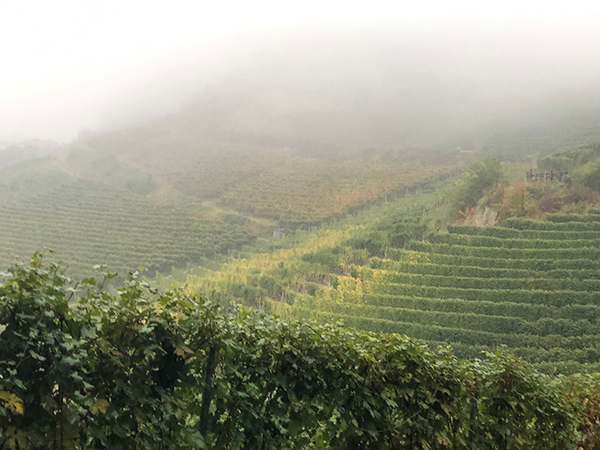
Perched on top of the hill above the village is Famiglia Anselma. Established in 1993, their impressive new winery is being constructed from old materials in the style of a castello. No expensive is being spared to produce classically-structured wines of incredible ageing potential that really show you what the region Barolo is all about. Their wealth of vineyards across the various communes allow them to produce several levels of wines that include regional blends of all their holdings, to individual commune blends (Barolo, Monforte, Serralunga), to individual vineyards like Le Coste (Barolo) Mosconi (Monforte) and, finally, a blend of their single vineyard Riservas labelled as ‘Adasi’. They’ve spent years consolidating their vineyard holdings rather than marketing the wines, so you may well not have heard of them. The 25-odd wines we tasted here with Maurizio Anselma represented almost one-third of the total wines tasted on the entire trip. This was a fascinating masterclass into the terroirs and nuances of Barolo and we walked away both fascinated and excited by what we had experienced. These wines are the epitome of traditional values coupled with vineyard/terroir know-how. They are very structured and need lots of time but the pure, dark fruit and integrated, spicy oak reminded Mark of his visit to Mugnier in Chambolle. It was hard to pick a favourite from his 2016s – they were each very different yet equally as impressive. We were also lucky to taste some older bottlings – a great insight into the phenomenal potential of the region but also this little-known producer.
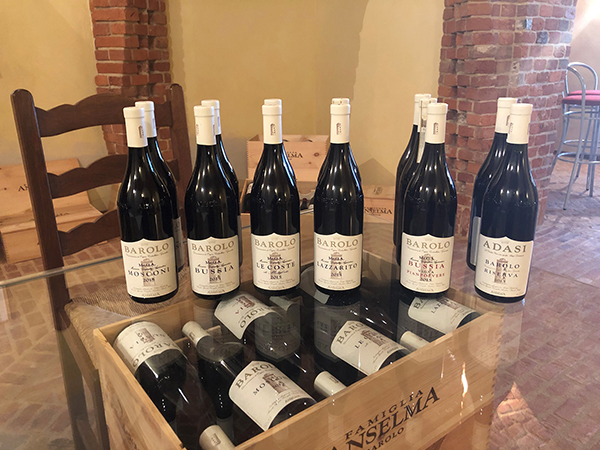
Our sixth and final visit in Barolo was to Cavallotto in Castiglione Falletto. The winery is situated on top of the Bricco Boschis hill and offers unprecedented views of the patchwork of vineyards across to La Morra on one side and over to Serralunga on the other. Although one of the region’s smaller communes, the great vineyards of Monprivato, Rocche de Castiglione and Villero place it firmly on the map as an important village. I would describe Cavallotto as the ‘Tertre Roteboeuf of Barolo’, thanks to their rich, plush, hedonistic style that crucially retain just enough freshness to keep them beautifully balanced. The wines are not like any other we tasted on the trip – they are wonderful. There were lots of highlights but in particular, we loved the 2016 Bricco Boschis which was replete with aromatics, was concentrated and rich on the palate but had a lovely acidic backbone which kept everything fresh and moreish. A very serious wine! For the Barolo connoisseurs amongst you, the 2013 Riserva Vignolo and 2013 Vigna San Giuseppe were wines that seemed to momentarily make the Earth stop – truly remarkable.
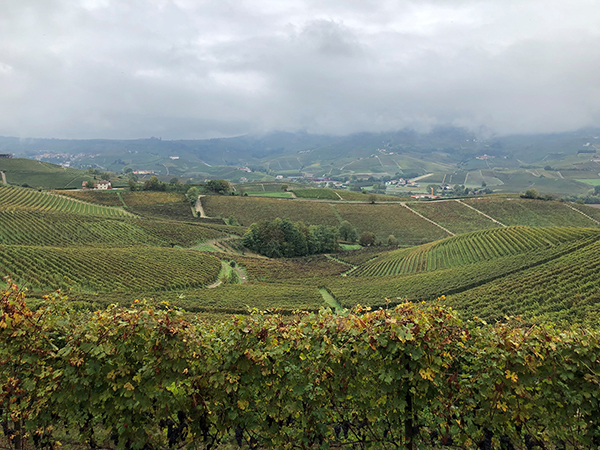
With that visit, our time in Barolo had sadly come to an end. Fortunately we had one more visit – this time in Barbaresco - before we braced ourselves for the long drive back to the airport. Barbaresco is famous for the great wines of Gaja, Giacosa, Roagna and of course the Produttori. After that, the wines are somewhat less well-known than those of its more illustrious neighbour. However, what is particularly exciting about Barbaresco is that, whilst their wines are made with the same care and to the same standards of those in Barolo, they are comparative bargains. With prices of fine wine increasing year on year, the outstanding value for money in Barbaresco is remarkable and should not be overlooked.
We were very happy to be introduced to Cantina Rizzi, just outside of the village of Treiso. The property boasts six crus including this one – some of the best sites in the Barbaresco area. Its name comes from the cru within which it sits – the Rizzi vineyard is something of a regional anomaly in that it is where the two bedrock/soil types of the region meet. This gives a very particular fragrance and complexity to their cru Rizzi. The style here is one of plush, plump fruit which makes the wines very easy to drink when young. That said, that isn’t to downplay the gravitas of the cru bottlings – there is structure and weight behind the fruit. The Rizzi bottling is plush and voluptuous. Their Nervo is more focussed and a bit leaner and the Pajore is all about power and punch. There is so much to love about these wines, especially the price – they are exceptional value. In his spare time, winemaker Enrico Dellapiana designs and paints the label of his Barbaresco Rizzi Riserva ‘Vigna Boito’ each vintage that it is made. What is even more impressive is that he personally hand paints the labels of the limited number of magnums they release. Move over Mouton Rothschild?
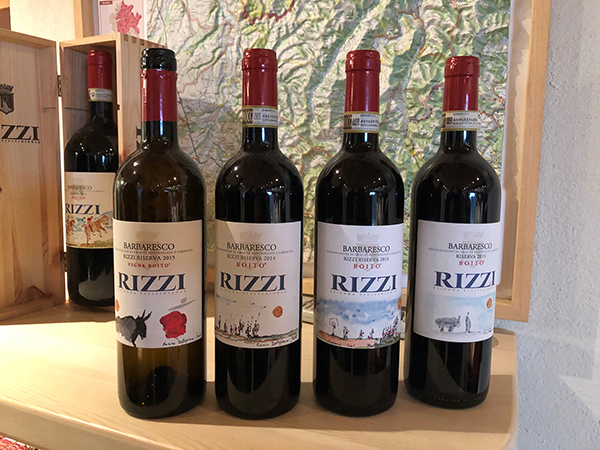
From our two days of intensive tasting it is clear that, whilst 2015 is a very fine vintage indeed, 2016 is on a whole other level. To our minds, the comparison to Bordeaux 2015 and 2016 is fair one. From a warm vintage, the 2015s are open-knit, approachable wines that have real depth and weight, many of which feel like they can be enjoyed now. The 2016s have all the concentration and power of a great year but the wines are so bright, pure and so beautifully balanced that they come across almost weightless. Most importantly, Piedmont 2016 has great wines from the very bottom to the very top – the ultimate sign of a truly great vintage. The hype that this is a very special year – a vintage of a generation, the greatest since blah blah blah – might just be justified. Keep your eyes peeled for our forthcoming offers as there are some truly great wines to be had.